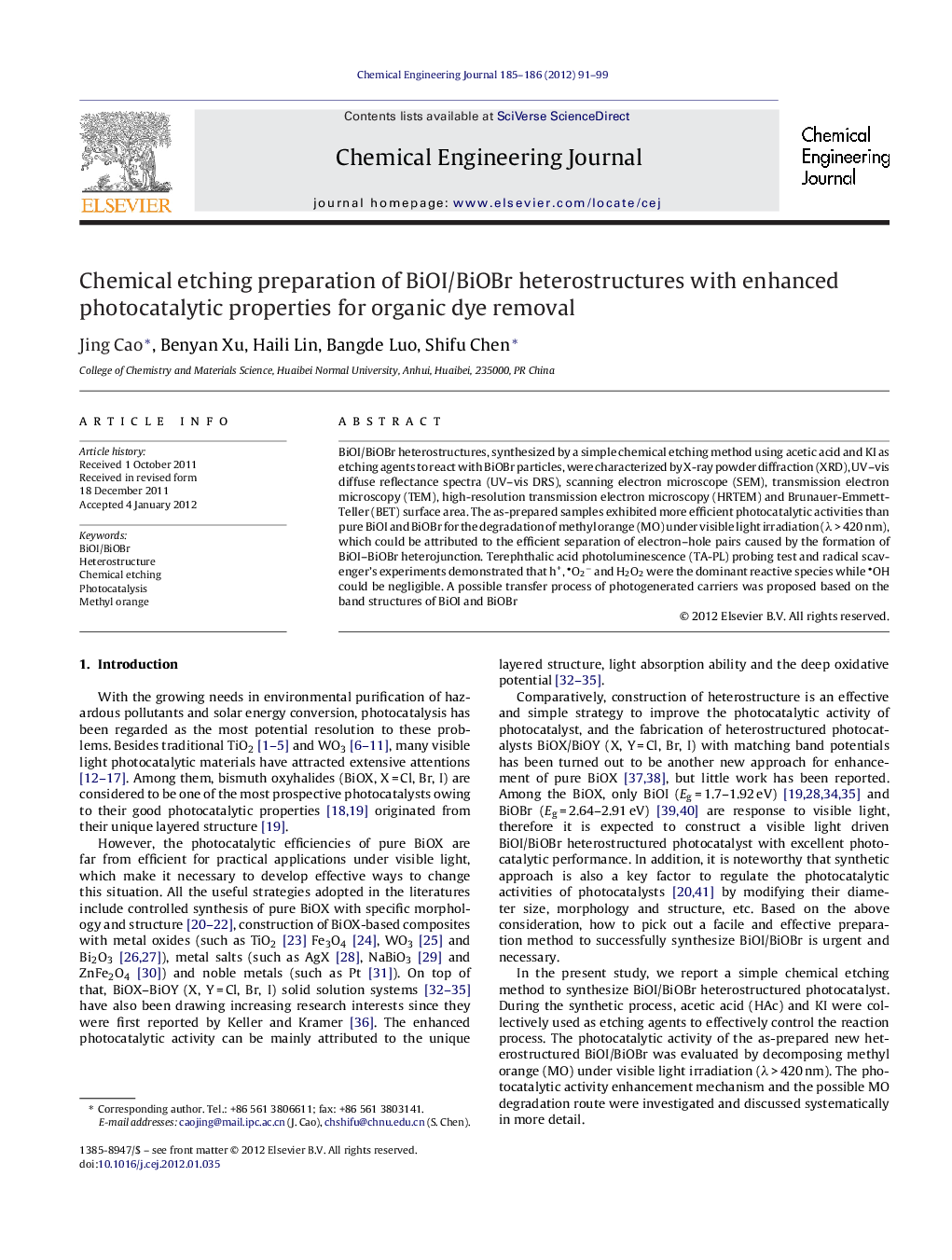| Article ID | Journal | Published Year | Pages | File Type |
|---|---|---|---|---|
| 150138 | Chemical Engineering Journal | 2012 | 9 Pages |
BiOI/BiOBr heterostructures, synthesized by a simple chemical etching method using acetic acid and KI as etching agents to react with BiOBr particles, were characterized by X-ray powder diffraction (XRD), UV–vis diffuse reflectance spectra (UV–vis DRS), scanning electron microscope (SEM), transmission electron microscopy (TEM), high-resolution transmission electron microscopy (HRTEM) and Brunauer-Emmett-Teller (BET) surface area. The as-prepared samples exhibited more efficient photocatalytic activities than pure BiOI and BiOBr for the degradation of methyl orange (MO) under visible light irradiation (λ > 420 nm), which could be attributed to the efficient separation of electron–hole pairs caused by the formation of BiOI–BiOBr heterojunction. Terephthalic acid photoluminescence (TA-PL) probing test and radical scavenger's experiments demonstrated that h+, O2− and H2O2 were the dominant reactive species while OH could be negligible. A possible transfer process of photogenerated carriers was proposed based on the band structures of BiOI and BiOBr
► Heterostructured photocatalyst BiOI/BiOBr was prepared by chemical etching method. ► The BiOI–BiOBr heterojunction is formed in the as-prepared BiOI/BiOBr sample. ► The enhanced photocatalytic activity is related to the BiOI–BiOBr heterojunction. ► O2−, h+ and H2O2, especially h+, dominate the photodegradation process of MO.
